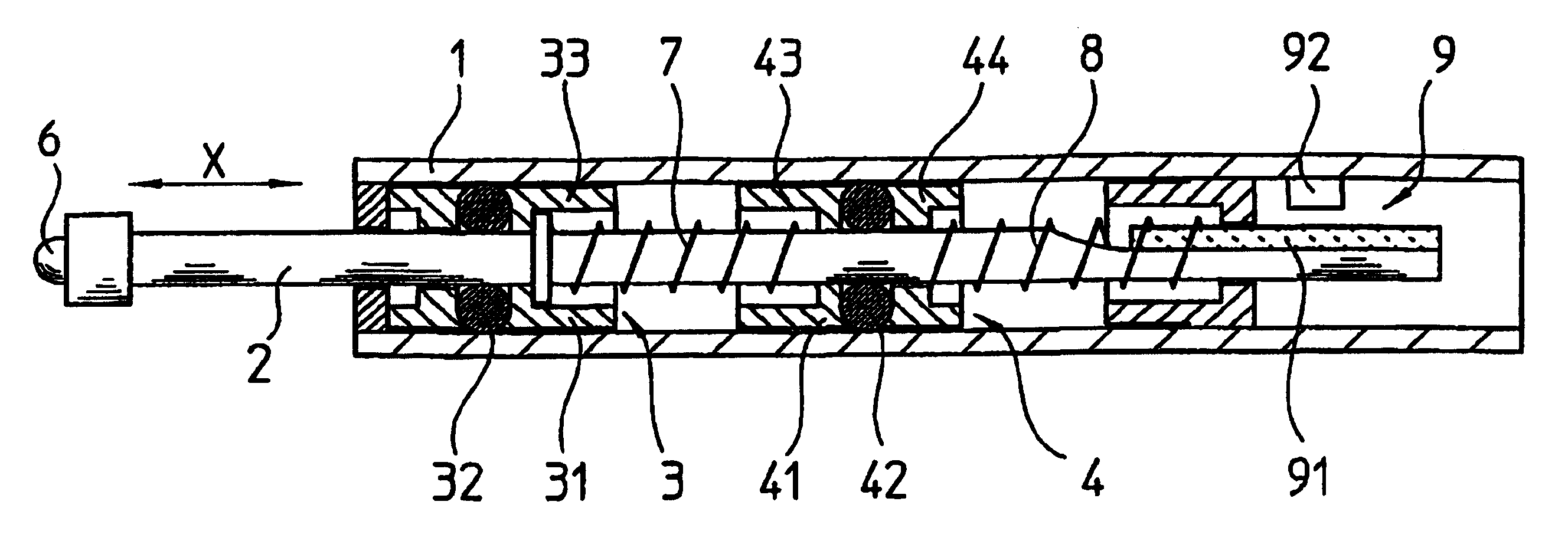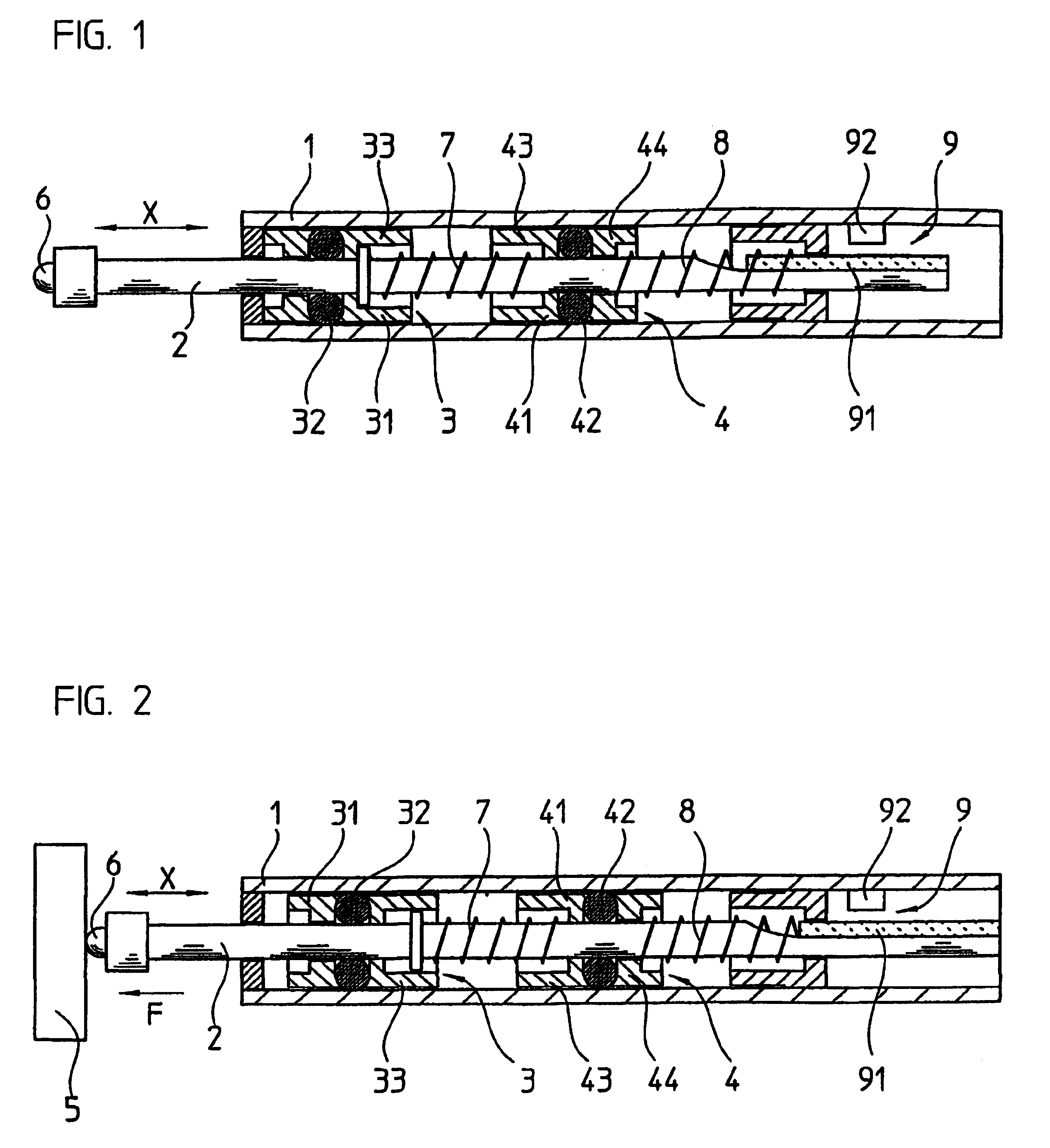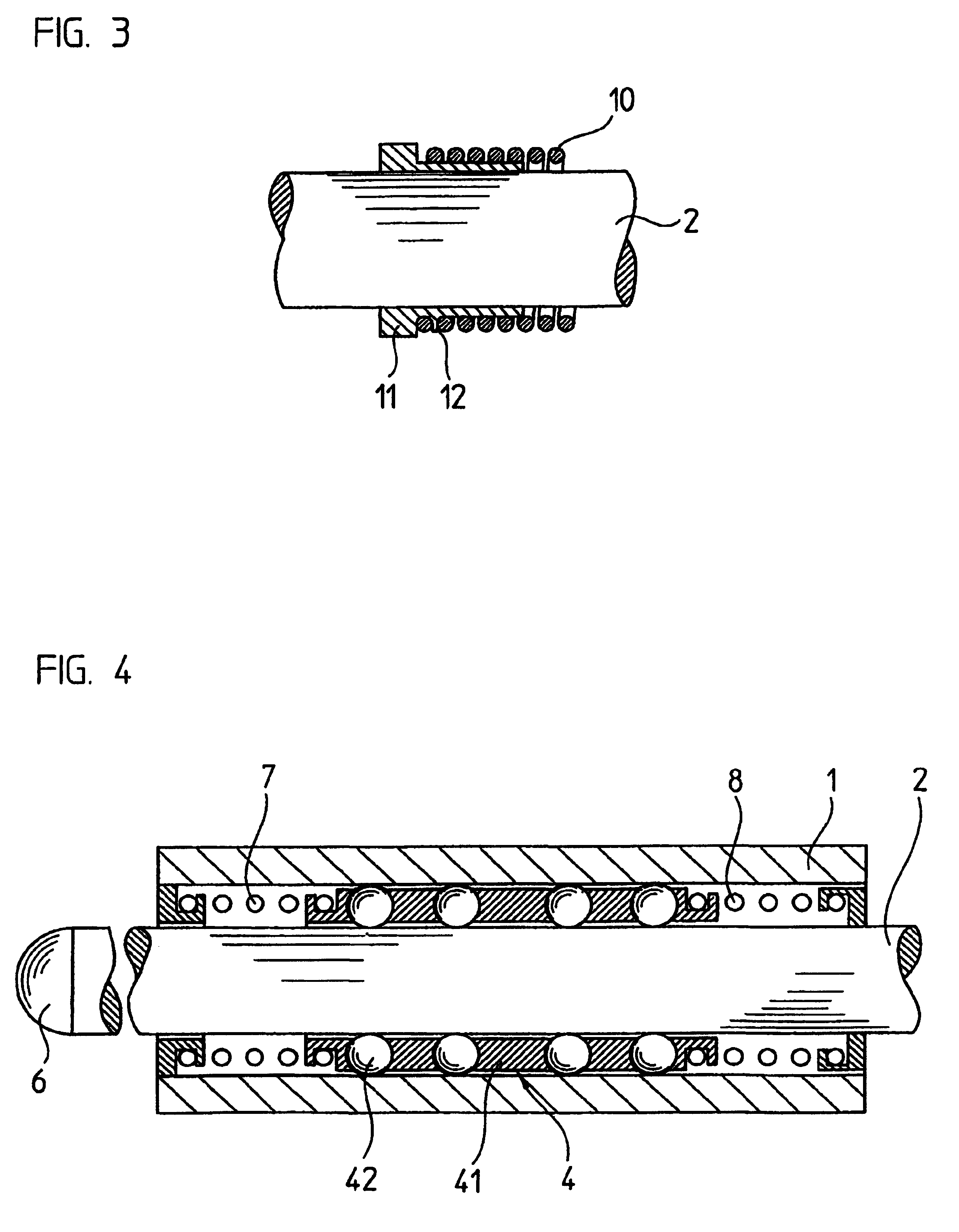Length sensor
a technology of length sensor and length, applied in the field of length measuring probe, can solve the problem that the long helical spring has a tendency to kink laterally
- Summary
- Abstract
- Description
- Claims
- Application Information
AI Technical Summary
Benefits of technology
Problems solved by technology
Method used
Image
Examples
Embodiment Construction
[0020]An exemplary embodiment of a length measuring probe designed in accordance with the present invention will be described in what follows by FIGS. 1 and 2. The drawing figures schematically show a cross section of the entire length measuring probe, includes a base body 1 in which a rod-shaped probe pin 2 is seated, displaceable in the measuring direction X.
[0021]For touch scanning a workpiece 5 represented in FIG. 2, the end of the probe pin 2 is spherically designed as a touch scanning element 6. In the course of a touch scanning process, the touch scanning element 6 of the probe pin 2 is forced with a force F onto the surface of the workpiece 5 to be measured. This force F is generated by helical springs 7 and 8, which are arranged one behind the other in the measuring direction X and force the touch scanning element 6 onto the workpiece 5. For a space-saving construction, the windings of the helical springs 7, 8 extend around the circumference of the round probe pin 2. For pr...
PUM
 Login to View More
Login to View More Abstract
Description
Claims
Application Information
 Login to View More
Login to View More - R&D
- Intellectual Property
- Life Sciences
- Materials
- Tech Scout
- Unparalleled Data Quality
- Higher Quality Content
- 60% Fewer Hallucinations
Browse by: Latest US Patents, China's latest patents, Technical Efficacy Thesaurus, Application Domain, Technology Topic, Popular Technical Reports.
© 2025 PatSnap. All rights reserved.Legal|Privacy policy|Modern Slavery Act Transparency Statement|Sitemap|About US| Contact US: help@patsnap.com



